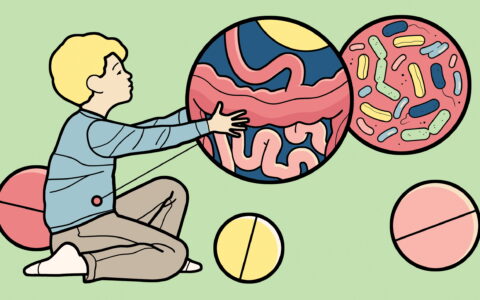Cardiovascular disease is a leading cause of death for patients with Duchenne muscular dystrophy (DMD), but age at mortality widely differs.
A study led by Vanderbilt University Medical Center’s professor of pediatrics Jonathan H. Soslow, M.D., M.S.C.I., and third-year pediatric cardiology fellow Joseph R. Starnes, M.D., M.P.H., sought to quantify the association between progression of cardiac magnetic resonance imaging (MRI) measurements and mortality rates in these patients.
“The point of the paper was to look at patients who have had more than one MRI and assess how their rate of change in different measures affected mortality rates,” Starnes said. “In theory, that rate would be a candidate measurement to try to affect with therapy.”
Changes in Cause of Death
Improved ventilation technology has eased the high rates of pulmonary complications that had been the leading cause of death for patients with DMD. That risk has been replaced by cardiovascular disease, most commonly a cardiomyopathy leading to heart failure, explained the researchers. Soslow says the median onset of cardiac disease is now 14 years old in DMD, while death “usually occurs about a decade later, but can occur as late as the 30s or 40s.”
“There’s a large amount of variability,” he said. “We’ve had patients who are 8 years old who died of cardiac arrest, and we have patients who are in their 30s and 40s who have pretty good-looking hearts. We are very interested in why that may be the case.”
“We’ve had patients who are 8 years old who died of cardiac arrest, and we have patients who are in their 30s and 40s who have pretty good-looking hearts. We are very interested in why that may be the case.”
Soslow and Starnes think this disparity stems from a combination of factors. For example, the inflammatory response from a childhood infection can cause myocarditis, setting someone up for faster heart degradation. Additionally, genetic factors unrelated to DMD can play a role when heart problems develop.
“Identification of cardiomyopathy risk could make therapeutic interventions to slow progression possible, allowing for longer lifespan,” Starnes said.
Dystrophin Destruction
Cardiac MRI is a useful tool to detect changes that occur early on in DMD.
One of 5,000 male babies born has DMD stemming from mutations in the dystrophin gene. The condition affects far fewer females.
Dystrophin typically stabilizes the cell membrane, preventing muscle contractions from damaging the cell. With dysfunctional or absent dystrophin, these patients suffer tears in the membrane, causing a calcium influx that inflames the muscle.
“The cycle of chronic damage, inflammation then healing eventually leads to cell death,” Soslow said. “The cells are replaced with scar or fat, which we can evaluate using cardiac MRI.”
Cardiac MRI Measures Matter
Due to the years and even decades that can elapse between medical intervention and death of a DMD patient, using mortality as the primary outcome measure for research is difficult.
“Identifying potential surrogate outcomes that associate with mortality could help guide clinical trials in the future,” Starnes said.
The team analyzed test results of 63 DMD patients related to left ventricular ejection fraction, indexed left ventricular end-diastolic and end-systolic volumes and strain.
They found that baseline left ventricular ejection fraction was significantly higher in surviving patients than in those who died during the course of the study — 58 percent and 54 percent respectively. Importantly, the rates of change three of the four measures were slower in the living group. Global strain decline was generally equivalent.
“Strain is a subclinical measure marker of dysfunction,” Starnes explain. “While global strain didn’t associate with mortality rate in this study, mid-circumferential strain did. My guess is that we would see global strain disparities in a larger population.“
The data was sufficient to demonstrate that cardiac MRI values are associated with worsening cardiac disease, thus potentially providing surrogate outcomes for clinical trials.
While the first-line standard of care for almost all DMD patients is still corticosteroids, the data from the study may lead clinicians to initiate more aggressive treatments sooner knowing a patient is further along toward heart failure, the researchers say.
Arrival of New Therapy
There are a host of Duchenne-specific and non-specific heart medications undergoing clinical trials that might slow the rate of heart dysfunction. One new therapy being used is an adeno-associated virus to deliver microdystrophin to cells through a single two-hour infusion.
“We’ve given this medication to five patients and have many others in the pipeline undergoing evaluation,” Soslow said. “It’s not a cure, but we’ve seen amazing clinical improvements in these kids. We don’t know how these improvements will look in five to 10 years, and we don’t know how these infusions will affect the heart longterm. But in the short term, the patients certainly seem to be doing better.
“I’m really excited about this opportunity, unlike anything we’ve seen in this disease, to delay or even stop the progression for a while.”
Yet, its availability creates a conundrum for patients and their families. The treatment is a once-only option due to antibodies that are subsequently activated.
“It becomes a sort of push-pull, where families are asking whether they should do this treatment now or wait for something else to come along in the future,” Soslow said. “I think a lot of people have taken the attitude that this is here now, it will make an improvement, and the more muscle I preserve early on, the better.”






